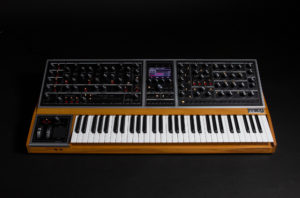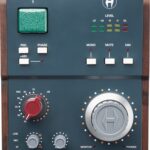Sell those stock options, as this week Moog released its benchmark polyphonic analog synth, blessed with the moniker of Moog One. Its price point places the synth squarely in the realm of the boutique. The 8-voice model runs $5,999; while the 16-voice edition rocks a street price of $7,999.
Needless to say, short of winning the lottery, most synth-nards and electronic musicians are out of the budgetary range for this behemoth. That’s sad, as its features and sound quality rank at the top of the current synthesizer market. Let’s take a closer look.
Moog One Specifications
Unfortunately, Moog didn’t send me a model to review. My absconding with the unit is a risk they didn’t want to take. Nonetheless, we forge ahead with a review of the Moog One specifications, as well as an imperfect sonic analysis based on the videos of the synthesizer.
As expected, the Moog One sports a robust analog synthesizer architecture, in both the 8 and 16 voice versions. The synth also includes a digital effects engine; simply bypass it to maintain a fully analog signal path. Those talented folks at Eventide licensed some of their excellent digital reverbs to give the Moog One a proper measure of space.
The keybed hosts 61 keys capable of sending both velocity and aftertouch messages. Onboard controllers include the standard pitch and modulation wheels, as well as an X-Y pad. Kaoss abounds! You know, the Moog One bears a resemblance to their classic Polymoog.
73 knobs and 144 buttons combine with an LCD screen; providing a state of the art synthesizer interface. Modular synth connectivity is accomplished with the two CV inputs and four CV outputs. There are also a host of audio outputs – stereo mains, sub outputs, dual headphone jacks, and audio inserts.
It’s all about the Tri-Timbral Synth Architecture
The tri-timbral nature of the Moog One’s design means each timbre acts as an independent polysynth, which its own sequencer, arpeggiator, and effects engine. Now, the high price of the unit makes more sense. This is a stunning piece of gear.
Considering these independent features of the tri-timbral design, I think anyone who went for the 8-voice model will be killing themselves for not spending the $2,000 more for the 16-voice. In short, the Moog One’s architecture appears to make running out of voices easy.
The Moog One’s three oscillator design includes practically every required analog waveform. FM, ring modulation, and hard sync are all available for your patch manipulation needs. A dual source noise generator with a host of colorful options rounds out this section of the synth.
Of course, the Moog One boasts Bob’s classic resonant ladder filter, with a host of slopes. The additional two state variable filters enhance the filtering options. Four LFOs, three envelopes, and a glide circuit make up the synth’s modulation section. There is also a full featured modulation matrix.
Moog’s Arty Video for the Moog One
Moog’s introductory video, while a bit too arty for someone just looking to dive into the details, nonetheless offers an interesting overview of the Moog One. Suzanne Ciani’s insights are especially worthy of note. Chick Corea does his thing with what sounds like Moog’s take on a DX7 polyphonic synth patch.
Check it out. It’s 20 minutes that won’t waste your time nor mind. As an aside (at the 10 minute mark), what’s the point of placing your book collection in large vertical stacks instead of a bookcase? It’s almost like designing a website where the information flows horizontally instead of vertically, like the rest of the Web.
This video as well the others I perused, reveals a stunningly powerful analog polysynth. The Moog One sounds great and works well as the centerpiece of an electronic music studio. Synth musicians who already own a ton of hardware and software gear might find they really don’t need Moog’s new behemoth.
Ultimately, the Moog One ranks at the top of the synthesizer world. Is it the Yamaha CS-80 for the 21st Century? Time plays the ultimate arbiter in that determination. While I likely won’t be able to afford one anytime soon, gifts are always accepted here at TabMuse. Anyway, the Moog Sub 37 maintains its status as the favorite synth in my studio!

